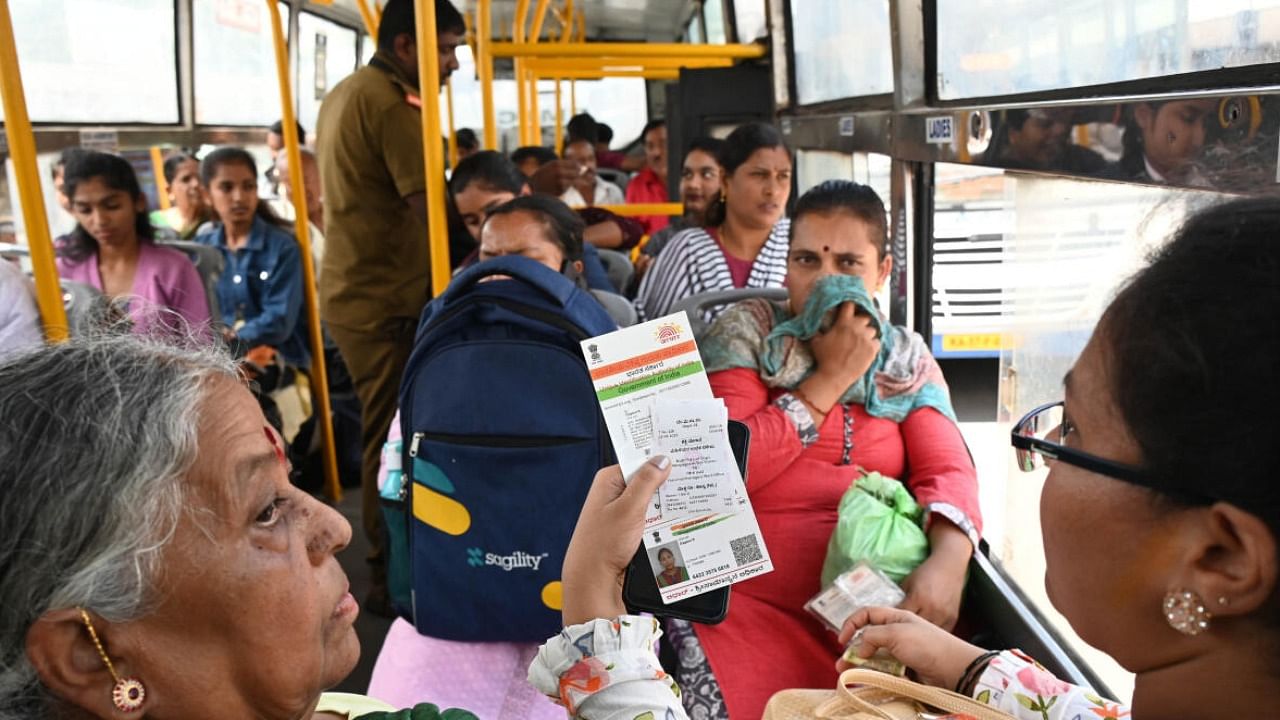
The free bus travel scheme for women catapulted the ridership of Karnataka's four Road Transport Corporations (RTCs) to a record 1.05 crore on Monday.
This was a 28 per cent increase over the average daily ridership of 82.51 lakh clocked by the RTCs in 2022-23. While RTC officials attributed the jump to the scheme, they cautioned that it was too early to draw conclusions from the data.
The KSRTC ferried over 36 lakh passengers, including 11.4 lakh under the scheme. Its average daily ridership is 23.59 lakh.
The BMTC, Bengaluru's lifeline, ferried almost 35 lakh people, a 25 per cent jump over its average daily ridership of 27.34 lakh, data showed.
In all, the four RTCs ferried 41.34 lakh women under the Shakti scheme, just short of the estimated ridership of 41.81 lakh. The overall numbers will go up as the RTCs are still collating data from late-night departures.
Launched by Chief Minister Siddaramaiah on June 11, the Shakti scheme is the first of the five election guarantees rolled out by the Congress government. Women with Karnataka domiciles can travel for free on the city, ordinary and express buses. Premium and interstate buses are not covered.
KSRTC Managing Director V Anbukumar said "initial excitement" was driving up ridership. "We need to wait for at least a month to draw conclusions," he told DH.
A senior BMTC official credited the Shakti scheme for high ridership numbers. "Bus travel has now become a matter of pride for women," he said.
He narrated how an Israel-born Indian citizen complained to him after a bus conductor asked her to buy the ticket. The woman, who lives in northeastern Bengaluru's Thanisandra, made two trips on a BMTC bus. During the first trip, the conductor issued her a free ticket, ostensibly after checking her Indian passport. But the conductor of the second bus wasn't convinced. "She's well-off and can afford to pay. But she insisted that she wants to make use of the facility," the official said. "She had a point."
The NWKRTC reported a similar rise in ridership and expects the numbers to go up, according to its chief traffic manager.
High ridership is, however, leading to overcrowding, especially in city and suburban buses.
There were instances of buses carrying at least 100 people each, far more than their carrying capacity. The conductor of a crowded city bus in Belagavi was at his wit's end to issue tickets.
Anbukumar promised to increase bus schedules based on demand. "We will rationalise trips once ridership stabilises. If necessary, we will increase trips. For now, we want to ensure all our passengers travel safely," he said. "We won't go for kneejerk reaction."